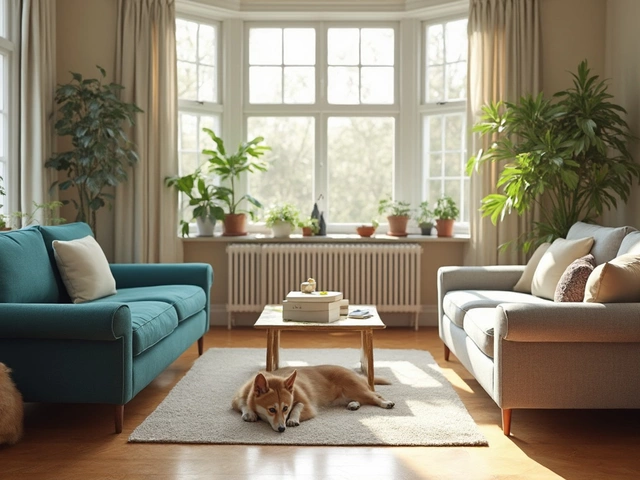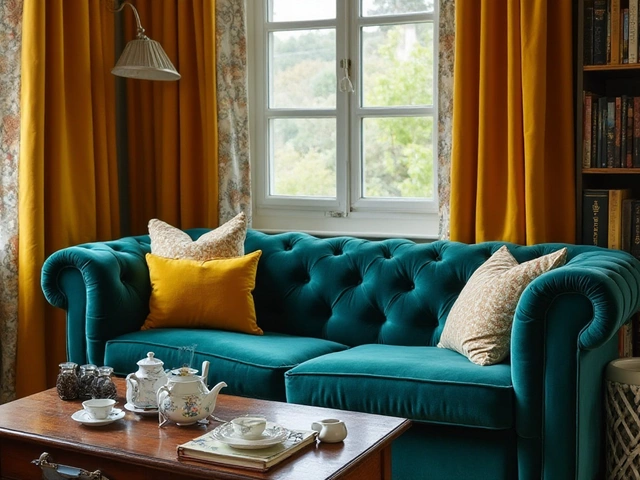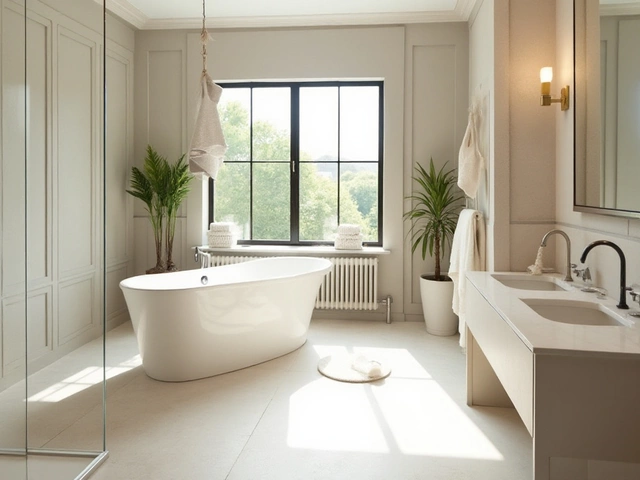Best Rug Types to Layer Over Carpet - Practical Guide
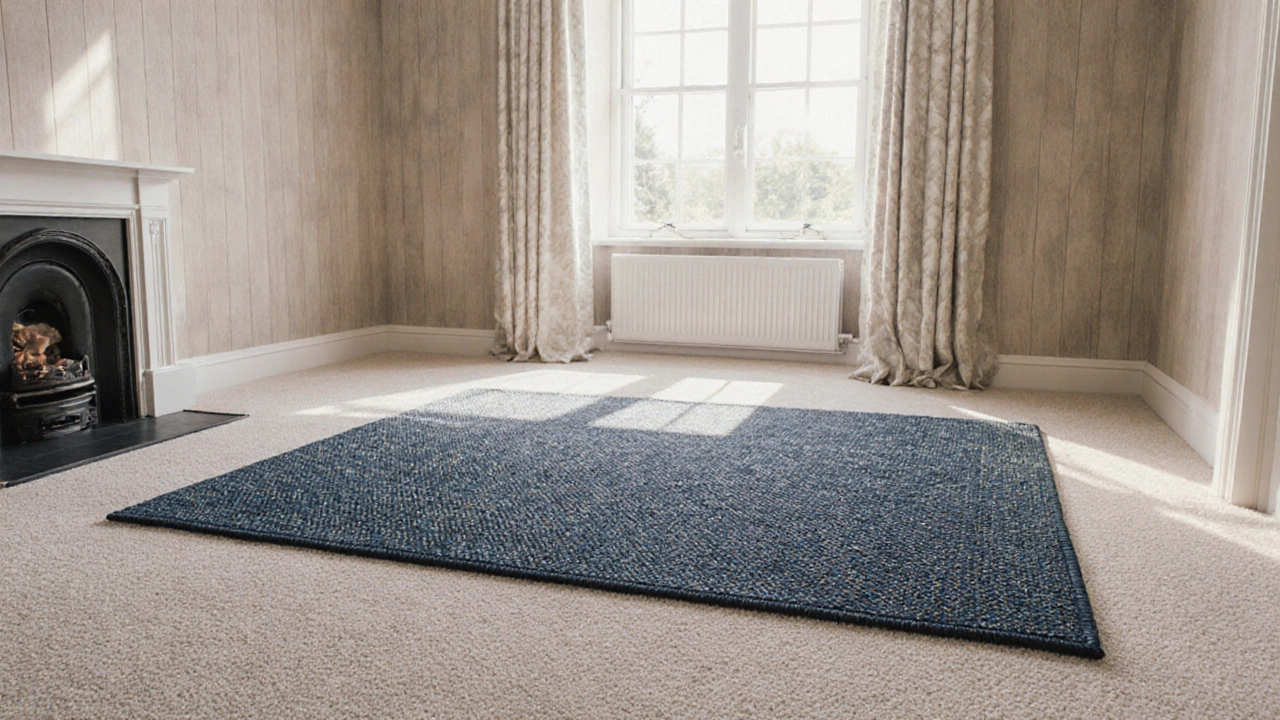
Quick Takeaways
- Flatweave and low‑pile rugs are the safest choices for layering on carpet.
- Use a non‑slip rug pad or underlay to keep both rugs stable.
- Match the rug size to the carpet area: leave at least 4‑6 inches of carpet visible around the edges.
- Prefer natural fibers like wool for durability, but synthetic options work well in high‑traffic homes.
- Maintain both layers by regular vacuuming and spot‑cleaning to avoid trapped dirt.
When you want to add texture or a pop of colour without replacing the whole floor, Rug is a floor covering that adds warmth, style, and protection to a room can sit right on top of an existing Carpet a woven or tufted textile surface typically installed wall‑to‑wall. The trick is picking a rug that plays nicely with the carpet underneath - not just in terms of looks, but also stability, thickness, and wear. Below we break down the most suitable rug types, key factors to consider, and step‑by‑step tips for a hassle‑free layered look.
Why Layer a Rug Over Carpet?
Layering can solve three common problems:
- Style upgrade: Change the mood of a room quickly without costly floor renovations.
- Comfort boost: Add a softer surface for bare feet in high‑traffic zones.
- Protection: Shield the carpet from wear in high‑traffic paths (e.g., hallway or living‑room traffic lanes).
But the wrong rug can cause wrinkling, bunching, or even damage to the carpet fibers. That’s why the best rug for carpet needs to be thin enough to stay flat, have good traction, and complement the carpet’s pile height.
Rug Types That Work Well on Carpet
Below are the most common rug styles evaluated for layering. Each entry includes a brief definition with microdata markup on first mention.
- Flatweave rug a lightweight rug woven without a pile, typically made from cotton, wool, or synthetics. Ideal for carpet because it stays flat and drapes nicely.
- Low‑pile rug a rug with a short, tightly packed pile, usually under 0.25 inches. Provides a subtle texture without adding bulk.
- Wool rug a rug made from natural sheep’s wool fibers, known for resilience and softness. Works if the weave is flat or low‑pile.
- Synthetic rug a rug constructed from man‑made fibers such as nylon, polyester, or polypropylene. Often lighter and more stain‑resistant, good for families.
- Shag rug a thick, high‑pile rug with a soft, plush surface. Generally a bad match for carpet because it can trap carpet fibers and cause bunching.
Key Selection Criteria
Use this checklist when hunting for the right rug to layer:
- Thickness: Aim for ¼‑½ inch total thickness (including pad) to keep the rug from rolling.
- Material: Natural fibers (wool, jute) offer durability; synthetics are easier to clean.
- Backing: Look for a low‑luster backing that won’t stick to carpet fibers.
- Slip resistance: Pair with a Non‑slip rug pad a thin, rubberized layer placed beneath a rug to prevent movement or use a built‑in anti‑slip backing.
- Size proportion: Keep the carpet border visible-typically 4‑6 inches around the rug.
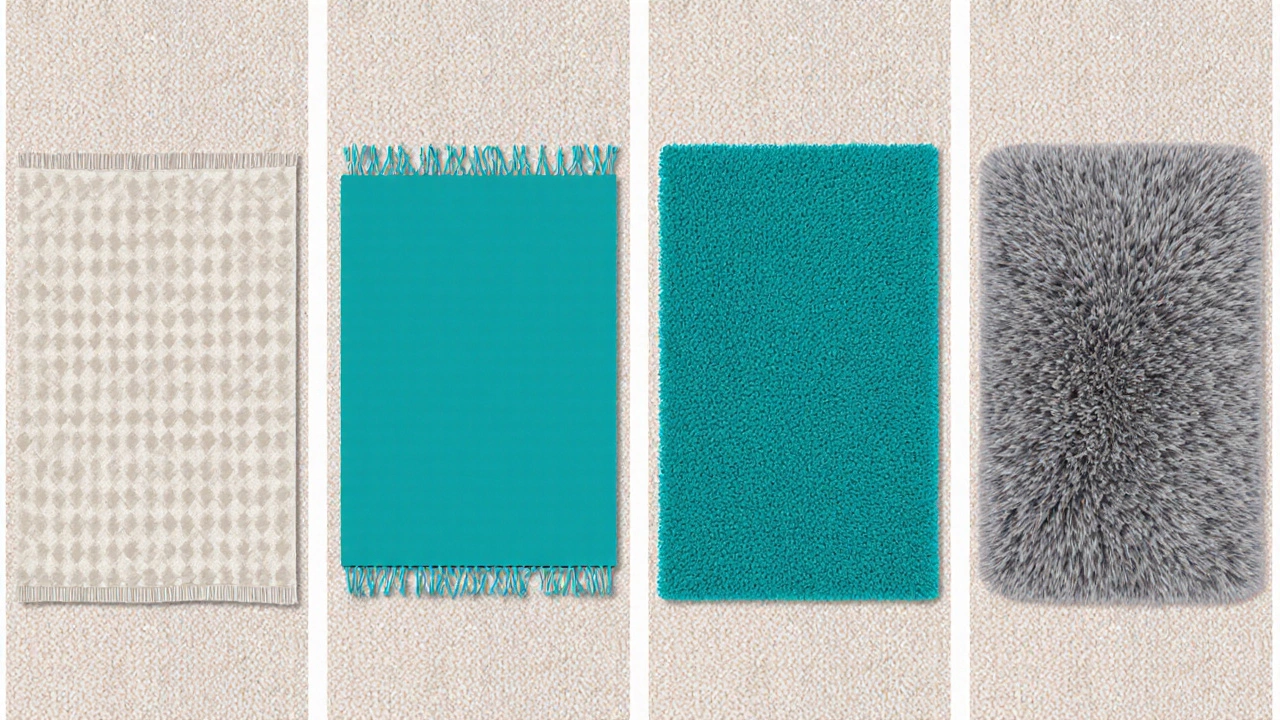
Installation Steps - How to Lay a Rug Over Carpet
- Clean the carpet thoroughly with a vacuum to remove dust and loose fibers.
- Lay down a Underlay a thin, breathable mat that adds cushioning and helps level uneven carpet if the carpet is plush; this creates a smoother surface.
- Place a Non‑slip rug pad that matches the rug’s dimensions. Trim excess with scissors.
- Center the rug, ensuring equal carpet border on all sides. Press down firmly to embed the pad.
- Walk over the rug gently to test stability. If it shifts, add a second pad or adjust the rug’s placement.
Maintenance Tips for Layered Rugs
Keeping both layers fresh prevents odor and wear:
- Vacuum both surfaces: Use a suction‑only setting on the rug to avoid pulling carpet fibers.
- Spot‑clean spills immediately: Blot, don’t rub; use a mild detergent suitable for the rug’s material.
- Rotate the rug every 3‑4 months: Distributes traffic evenly and reduces patterned wear.
- Professional cleaning: Schedule deep cleaning for the carpet annually; the top rug can be removed and cleaned separately.
Comparison Table - Best Rug Types for Carpet
| Rug Type | Typical Thickness | Material | Slip Resistance | Layer‑Friendly Rating |
|---|---|---|---|---|
| Flatweave | 0.1‑0.2 in | Cotton, Wool, Polyester | Medium (use pad) | High |
| Low‑pile | 0.15‑0.3 in | Wool, Nylon | High with pad | High |
| Wool (flat weave) | 0.2‑0.35 in | 100% Wool | Medium‑High | High |
| Synthetic (polypropylene) | 0.1‑0.25 in | Polypropylene | High (inherent grip) | Medium‑High |
| Shag | 0.5‑1.0 in | Polyester, Acrylic | Low | Low - not recommended |
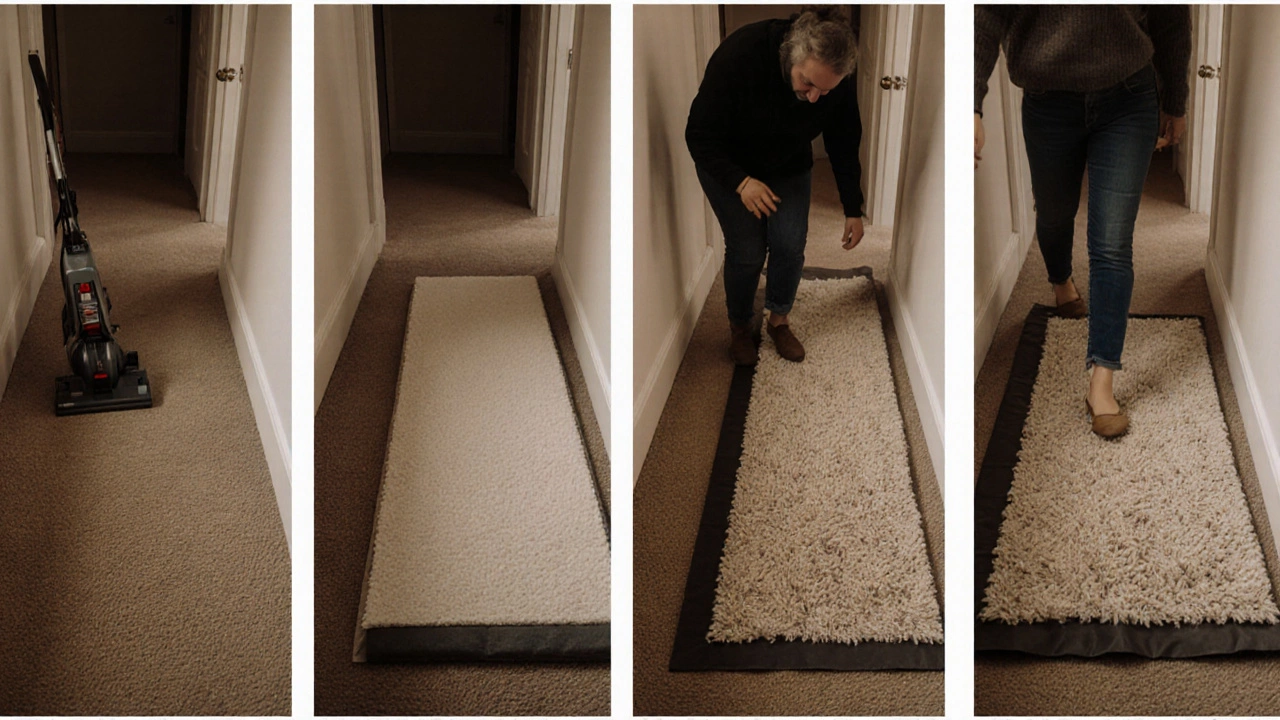
Common Mistakes to Avoid
- Choosing a rug thicker than the carpet pile - it will roll and create trip hazards.
- Skipping the rug pad - even the best‑backed rug can slide on plush carpet.
- Using a dark rug on a light carpet without a border - the carpet can become hidden, making cleaning harder.
- Neglecting regular vacuuming - dirt gets trapped between layers and wears the carpet faster.
Final Thoughts
Layering a rug over carpet is a low‑cost way to refresh a room, add comfort, and protect your flooring. By picking a thin, low‑pile or flatweave option, pairing it with a non‑slip pad, and keeping it properly sized, you’ll get a sleek look that lasts. Remember to maintain both layers, rotate the rug, and avoid heavy, high‑pile styles. With these tips, you’ll enjoy the best rug for carpet without compromising safety or style.
Frequently Asked Questions
Can I put any rug on carpet?
Not all rugs are suitable. Thin, flatweave or low‑pile rugs work best because they stay flat and don’t trap carpet fibers. Thick shag or pile rugs tend to bunch and can be unsafe.
Do I need a rug pad under a carpet‑layered rug?
Yes. A non‑slip rug pad adds grip, prevents movement, and can level uneven carpet. It’s a cheap insurance policy against accidents.
How much larger should the rug be than the carpet area?
Leave about 4‑6 inches of carpet visible around the rug. This keeps the carpet from being hidden and makes cleaning easier.
Is wool a good material for a rug over carpet?
Wool is excellent if the rug is flat‑weave or low‑pile. Its natural resilience holds up well, but avoid thick, plush wool rugs that can trap carpet fibers.
How often should I rotate a layered rug?
Every three to four months. Rotation spreads wear evenly and keeps the pattern looking fresh.

